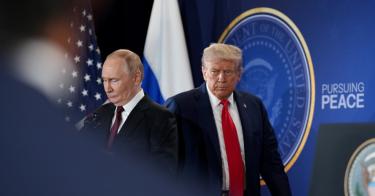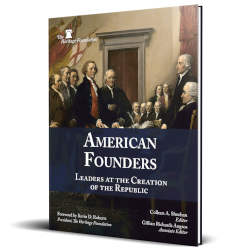New START, the last remaining nuclear arms-control treaty between Russia and the United States, will expire in February. Once it does, there will be no limits on how many nuclear weapons Russia or the United States can build or field.
Many argue that President Donald Trump should seek an agreement with Vladimir Putin for some type of follow-on agreement, even a nonbinding one, to maintain the limits on nuclear weapons established by New START during the early days of the Obama administration.
It is certainly tempting—and perfectly understandable—to want some type of arms-control agreement with Russia. From Ronald Reagan onward, American presidents have rightly sought ways, through presidential agreements or arms-control treaties or unilateral actions, to rid the world of nuclear weapons.
>>> The Nuclear Force Requirements of a Protracted Conventional War
But pursuing a follow-on to New START would be reckless. The Russians have cheated on and abrogated treaty after treaty, including Reagan’s landmark Intermediate-Range Nuclear Forces Treaty and New START itself. Even if Trump and Putin settled on a gentleman’s agreement to maintain New START warhead levels, establishing an inspections regime to verify that Russia was not cheating on its warhead count would be challenging. Russian leaders have not allowed U.S. inspectors into their country for years, and any agreement that did not require inspections or verification measures would incentivize Russia to continue cheating.
Most important, maintaining current warhead levels would benefit only one party: China.
New START limits the United States to mounting one warhead apiece on its 450 intercontinental ballistic missiles. U.S. nuclear doctrine generally requires that two warheads be used to engage and destroy enemy targets—which today means we would have to launch two ICBMs per target, allowing us to cover about 225 targets. This is enough to serve as a credible deterrent against Russian aggression toward the American homeland.
But China is believed to have the world’s fastest-growing nuclear arsenal. Since 2020, it has tripled the size of its warhead count. Within a few years, it will have as many operationally deployed strategic nuclear weapons as the United States. And when it reaches that point, the United States will not have the number of operationally deployed warheads to cover—and therefore deter—both Russia and China simultaneously. (In fact, given China’s rapid expansion in ICBM silos, that threshold might have already been crossed.)
If New START expires without any follow-on agreement, the United States could add nuclear warheads from its reserve stockpiles to its existing ICBM force—having each ICBM carry two or three warheads, not just one. So instead of firing two ICBMs to destroy a target, a single ICBM would suffice. The United States would then be able to hold 450 targets at risk, allowing it to cover significant portions of China’s nuclear force. Both Russia and China could be deterred in the immediate term without additional ICBMs having to be deployed.
Critics argue that Russia could react by adding additional warheads to its own existing ICBM force. But this would not change U.S. targeting requirements. A single American ICBM loaded with two to three warheads would still be able to counter a single Russian ICBM, whether it was loaded with one or three or five warheads. (And given Russia’s track record with previous agreements, it might already be cheating in this manner.)
Imagining that a meaningful arms-control agreement with Russia will emerge after the expiration of New START early next year amounts to wishful thinking. There is simply no good deal to be had at this point. Instead, it would be far better for the United States to create the leverage it needs by fielding a more robust and credible nuclear deterrent. Only that kind of pressure can incentivize both Russia and China to come to the negotiating table at the same time, allowing all three nuclear superpowers to attempt to negotiate a more meaningful and effective agreement.
This piece originally appeared in The Washington Post




